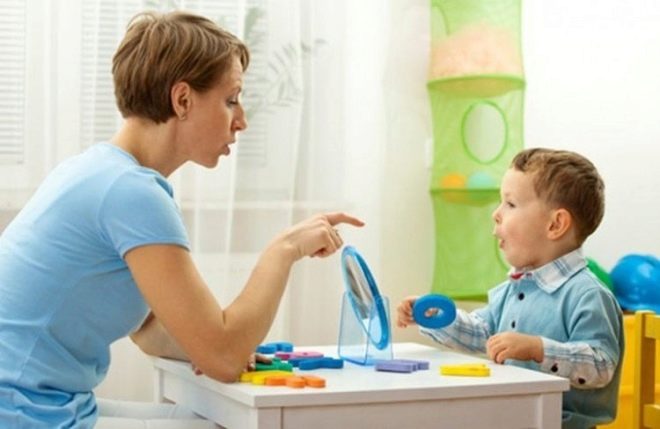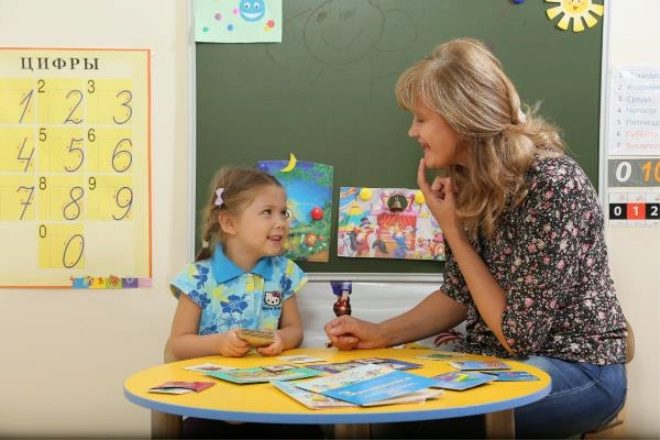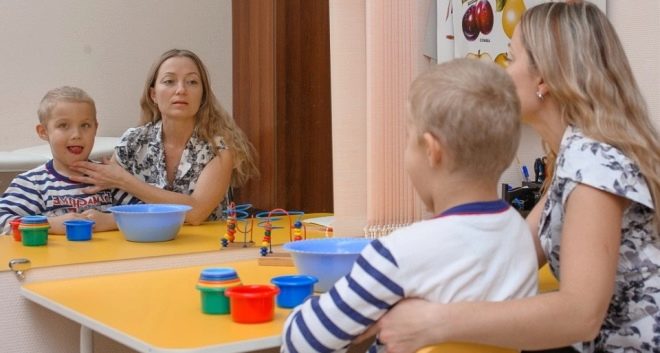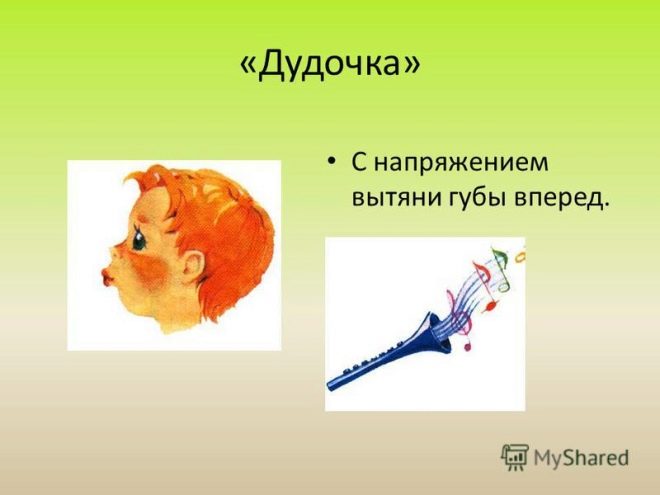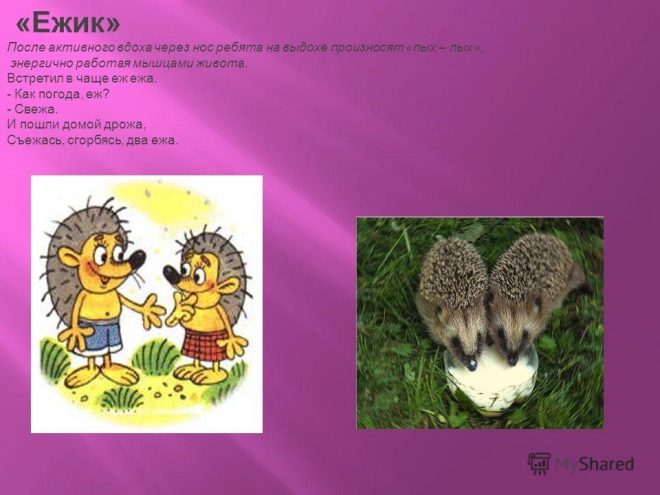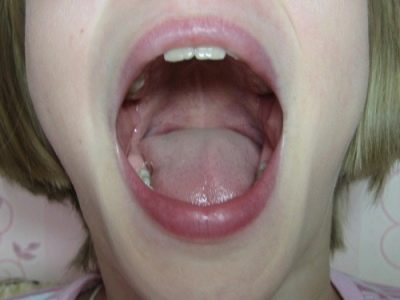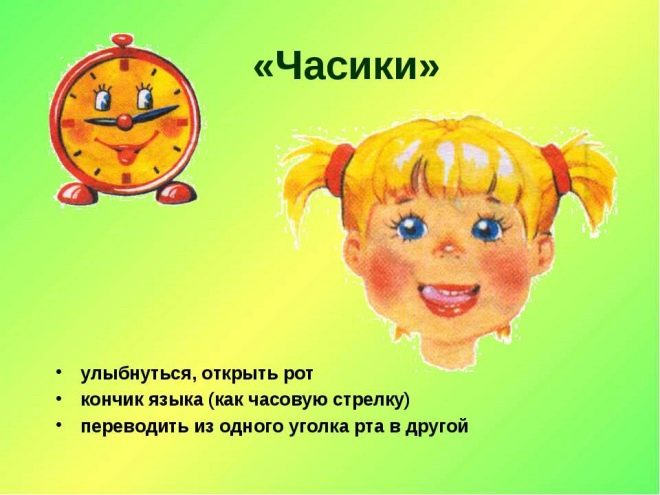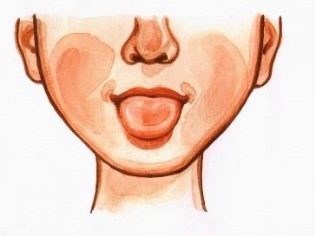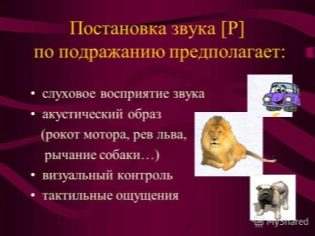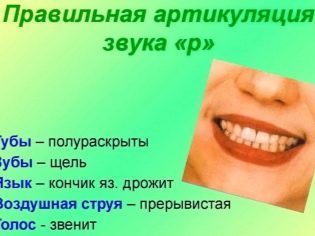Articulation gymnastics for children 3-4 years
The habit of speaking is correctly formed in early childhood. A child who has been taught to speak clearly and beautifully will not experience problems either in kindergarten, or at school, or in adulthood.
Unfortunately, not all children are aged. 3-4 years have a good diction, but it is fixable. Speech therapist and home exercises can help parents to improve articulation. We will tell about how to make articulation gymnastics for children of early preschool age in this material.
About the method
Articulation exercise complex - is charging to strengthen the muscles of the speech apparatus. If they are weak, then the baby will have problems with pronunciation. As the lips, vocal cords, cheeks and neck are strengthened, as well as the uvula, it is easier for the child to pronounce various sounds and their combinations. And gradually the correct pronunciation becomes familiar.
Gymnastics has a therapeutic and prophylactic purpose, that is, it helps to correct an abnormal speech habit and can also prevent speech defects.
In the course of the exercises, the blood circulation of the speech muscles is improved, the increased muscle tone is reduced, which prevents the baby from making certain sounds unhindered. In the course of performing static exercises, the child learns to establish the correct position of the vocal apparatus, and dynamic tasks will help in mastering the pronunciation.
Who are shown and contraindicated classes?
Such speech gymnastics, of course, is useful to all kids. At the age of 2-3 years, basic speech skills are formed, and then, alas, speech defects are also formed. It is reasonable to begin classes at the age of three, and if the child belongs to the category of early-learners, then at 2.5 years.
After three years, some deviations and abnormalities in the pronunciation of sounds become apparent. So, at this age stuttering is clearly manifested. Many children because of the weakness of the muscles of the speech apparatus at this age “chew” half of the alphabet, which is why it is difficult to understand exactly what the child is saying. Stuttering and dysarthria.
Gymnastic articulation exercises will help in establishing diction, voice power, pronunciation, increase the speed of speaking, improve speech intelligibility.
However, there are situations and conditions in which to engage in this type of gymnastics temporarily or absolutely not worth it.
Congenital heart defects, if gymnastics are combined with respiratory, mental disorders, in which the child does not understand the "introductory" and is not oriented in what they want from him, are contraindications.
Sick teeth or stomatitis are also a temporary contraindication. Wounds, inflammations of the tongue, the palate, the inner surface of the cheeks, and sore throat are in full swing - these are all conditions in which articulation gymnastics are not recommended.
General requirements
If you decide to do this kind of gymnastics with your baby, remember that you need to start with easy tasks and gradually move to more complex ones.
The easiest and most accessible for beginners is considered to be static exercises, in which speech muscles should be kept in a predetermined position. With dynamic exercises in no hurry. At the age of 2-4 years, these exercises are still considered to be quite complex, but as the static group improves, you can add dynamic tasks.
It is important to conduct classes in the form of a game, otherwise charging will quickly bore the baby and he will refuse to perform the tasks.
Systematicity is needed - gymnastics needs to be done daily for quite a long time. In the day you can spend 3-4 classes for 5 minutes. These "five minutes" will not let the child get tired and be interesting.
In each task, try to include 2-3 exercises, no more. Be sure to repeat the previously learned tasks and techniques, and only one task during the class, choose a new, not yet familiar.
Gymnastics is carried out in a sitting position. The neck and arms of the child must learn to relax. It is best to conduct classes in front of a mirror. In it, the child can see himself, his lips and facial expressions during pronunciation, as well as compare them with your facial expressions and the location of the lips and tongue.
Printed or drawn cards with pictures that will illustrate some exercises will be helpful. For example, for the exercise “Hedgehog” you need to have a picture with a bright and colorful funny hedgehog. This will allow the child to better visualize the task.
Do not hurt the baby, do not criticize, do not scold him if something does not work.
Resentment and grief will only increase muscle clamps, undermine his faith in his own strength, he will begin to refuse to work. Mom's voice should be soft and quiet, not demanding.
Recommended Exercises
For a particular child, an individual may be assigned a complex. but among the basic tasks for children of a specified age, the following can be noted:
- "Fife". Ask the child to stretch the sponge with a straw forward and hold it as long as possible. With the complication of exercise, you can ask the child to produce something like "du-duuuuu."
- "Breakfast Kitten". Show your baby a picture of a kitten who drinks milk from a bowl. Ask your child to open his mouth and demonstrate how cats lacquer milk. Complicate the task by asking you to open your mouth wider, at the same time, smile and stroke when you “lap up” your tongue with the palate.
- "Hedgehog". This is an active exercise. Show the kid a card with a hedgehog and read the poem: "It looks like a ball, sweet, kind, nice hedgehog." The child inhales at the beginning of the verse, and at the end of the couplet it is necessary to actively exhale and on the exhale as loudly as possible to say “puff-puff”
- "Goal". Mom reads: “We open the gates, we invite everyone to visit! ". The task of the baby is to open his mouth wide, hold him in this state for 5-7 seconds and smoothly close.
- "Balloons". Ask your child to inflate his cheeks like balloons. The task is to keep them in this position for as long as possible, and then abruptly slam their palms on the cheeks, blow off the “balls”.
- "Watch". Mom shows a card that shows a clock with a pendulum. He reads: “Silently watch goes, five minutes, seven minutes” (with these words the child sticks out his tongue and tries to describe the circle with the tip in the air, like clockwise hands). Mom continues: “Well, the pendulum is a whale, tick-tick, tick-tuck! "(The child after circular movements with the tip of the tongue moves to move the tip of the tongue to the right and left, like a pendulum).
"Puppy and snake." Ask your child to show how a puppy breathes on a summer day — his tongue is sluggish, wide and spread over his lower lip. And then ask to show how this snake does - the tongue becomes mobile and “sharp”.
If there are defects in certain sounds, add exercises to improve the pronunciation of these particular “problem” sounds:
- "Zoo". Show the card with the tiger and ask the baby how the tiger growls - "Rr-r." Show pictures of those animals whose names have a difficult sound for the baby and ask them to voice the name and show how the beast “talks”: to pronouncing the sound "P" - tiger cub, badger, fish, giraffe, to practice the sound "L" - lion, husky, fox, dolphin, fallow deer, deer, lemur, on “W” and “F” - beetle, bumblebee, giraffe, foal, jackal, on “C” - dog, owl, elephant, fox, gopher.
"Chytyorovki". You can use a variety of poems. The main requirement is the repetition of the “problem” sound.With a fuzzy pronunciation of "P", for example, you can come up with something like: "Ra-ra-ru, ra-ra-ru, take a walk around the yard, ru-ru-ru, ru-ru-ru already go home! ". Similar chistogovorki can compose independently on any sound that is not very good at pronouncing a child.
Useful tips
Be sure to enter into the lesson program some exercises from respiratory gymnastics according to the Strelnikova method. It is considered very effective in the development of speech. In particular, you can take a regular feather and ask the child to hold him in the air as long as possible, making sharp short exhalations. Teach your child to breathe calmly and measuredly. At the last exit after 5-6 breaths, you can say the short syllables “Ra”, “Sa”, “Aya”, etc.
Do not force and do not force the child to continue the lesson, if he is tired and began to be distracted and capricious. It is better to stop and return to class later, when the baby is set up to play and work out. There will be no benefit from coercion.
You can learn about other interesting articulation exercises for children from the following video.


